You're using an outdated browser. Please upgrade to a modern browser for the best experience.

Submitted Successfully!
Thank you for your contribution! You can also upload a video entry or images related to this topic.
For video creation, please contact our Academic Video Service.
| Version | Summary | Created by | Modification | Content Size | Created at | Operation |
|---|---|---|---|---|---|---|
| 1 | Deborah Panepinto | -- | 2941 | 2022-12-08 04:18:09 |
Video Upload Options
We provide professional Academic Video Service to translate complex research into visually appealing presentations. Would you like to try it?
Cite
If you have any further questions, please contact Encyclopedia Editorial Office.
Panepinto, D.; Ravina, M.; Zanetti, M. Thermal Treatment Emissions Focusing on CO2 Parameter. Encyclopedia. Available online: https://encyclopedia.pub/entry/38236 (accessed on 22 December 2025).
Panepinto D, Ravina M, Zanetti M. Thermal Treatment Emissions Focusing on CO2 Parameter. Encyclopedia. Available at: https://encyclopedia.pub/entry/38236. Accessed December 22, 2025.
Panepinto, Deborah, Marco Ravina, Mariachiara Zanetti. "Thermal Treatment Emissions Focusing on CO2 Parameter" Encyclopedia, https://encyclopedia.pub/entry/38236 (accessed December 22, 2025).
Panepinto, D., Ravina, M., & Zanetti, M. (2022, December 08). Thermal Treatment Emissions Focusing on CO2 Parameter. In Encyclopedia. https://encyclopedia.pub/entry/38236
Panepinto, Deborah, et al. "Thermal Treatment Emissions Focusing on CO2 Parameter." Encyclopedia. Web. 08 December, 2022.
Copy Citation
Waste-to-energy (WtE) technologies can offer sustainable solutions for waste that cannot be further reused or recycled, such as the part of municipal solid waste (MSW) that is not suitable for recycling processes. The two main (most widely used) thermal treatment technologies that can be applied to MSW are direct combustion in an incineration plant and gasification.
MSW thermal treatment
incineration
gasification
flue gas emissions
CO2 emissions
1. Introduction
Municipal solid waste (MSW) is a problem that affects the entire world. The Waste Framework Directive (WFD)—Dir. 2008/98/EC governs waste management in the European Union [1]. This Directive is codified in the Consolidated Environmental Act (TUA, Italian Legislative Decree 152/2006) [2] under Italian law. The WFD is based on various waste management ideas, including:
-
Reducing resource consumption;
-
Taking into account the complete life cycle of materials/products;
-
Achieving the best environmental outcomes overall;
-
Using the expanded producer responsibility system to implement the “polluter pays” idea.
The hierarchy of operations that the Directive defines for waste mechanism is as follows:
- -
-
Prevention;
- -
-
Reuse;
- -
-
Recycling;
- -
-
Recovery (i.e., energy recovery);
- -
-
Final disposal in a landfill.
This hierarchy specifies the priority for the application of management operations, according to which prevention of waste generation is preferable to any other management method. Furthermore, since prevention is part of the production process of the waste, the first real management intervention is the second priority, namely, reuse.
In fact, when residue has been produced, the first choice is to reuse the material (in the same process that produced it), and the second is to recycle it after a treatment. If neither of these options is sustainably viable, then it is preferable to use the waste material for recovery (such as energy recovery in thermal treatment plants) before sending it for final disposal in a landfill.
The WFD also specifies that it is possible to deviate from this general hierarchy in particular cases if a greater environmental benefit can be demonstrated on that basis, for example, via a Life Cycle Assessment (LCA).
The last amendment to the WFD was introduced at the end of May 2018 with the introduction of the so-called “Circular Economy Package”.
The “Circular Economy Package” reinforces some concepts that were already contained in the WFD and also clarifies some definitions in order to improve the collection and processing of statistical data on waste management. Particular attention is paid to the target of keeping materials within the cycle of production and consumption as long as possible so as to minimize the need for virgin materials and the amount of waste to send for final disposal.
From the viewpoint of average MSW production in European countries, the amount is more or less stable throughout the year, as can be seen in Figure 1, which depicts the production of MSW in EU countries for the two years of 2005 and 2020 (the data came from [3]).

Figure 1. MSW generated in the EU in the years 2005 and 2020.
Figure 2 shows the MSW management situation in the year 2019 in EU countries (graph elaborated used the data reported in [4]). Here, it is possible to see deep differences between the most advanced countries (on the left), where final disposal in landfills has been almost completely eradicated, and the other countries (on the right) where the landfill method is still widely used.

Figure 2. Municipal waste treatment in 2019 (EU 27 + Switzerland, Norway, and United Kingdom).
The shift to environmental, economic, and social sustainability depends on effective management. It is important to note that environmental and social sustainability (ESS) is the adaption and integration of precautionary environmental and social principles and considerations into decision-making processes. The paradigm for waste management is evolving as a result of this shift; although waste is solely seen as a burden in a linear economy, it may be seen as a resource in a circular economy (and this is, for example, a solution to also improve the ESS). The annual amount of MSW generated worldwide is 2.01 billion tons, and by 2050, that amount is predicted to increase to 3.40 billion tons [1]. As a consequence, the production of energy from waste that cannot be reused or recycled can represent a solution in line with the principles of the circular economy and can contribute to energy diversification [2][5]. The waste-to-energy (WtE) process can currently be achieved by several different technologies, such as anaerobic digestion, the production of waste-derived fuels, (co-)incineration in combustion plants and in cement and lime production or in dedicated facilities, or indirect incineration following a pyrolysis or gasification step. Among the WtE technologies, incineration is the most-established process, accounting for more than 1400 plants worldwide [3]. Incineration or “direct combustion” is the complete, rapid exothermic oxidation of the waste organic fraction in the presence of an adequate excess of oxygen. Incinerators work with many different types of waste, including MSW [4][5][6][7], products discarded after the completion of their use phase (such as end of life tires, [8]), solid refuse fuels (SRFs) [9][10], industrial waste (IW) [11][12], and industrial hazardous waste (IHW) [13]. In addition to being a solution for waste management, incineration provides heat and can generate steam and electricity [14]. Gasification, often known as “indirect combustion”, is another WtE process that involves the thermochemical decomposition of MSW to produce combustible gas (syngas) and a later combustion step for energy recovery (two-step oxidation) [5][15]. Germany and Italy have the most gasification facilities, but the Scandinavian nations have the largest individual plants, according to a European project report [16]. A thermochemical conversion process known as gasification can handle a wide range of feedstocks, including biomass, municipal solid waste, and other solid waste [17]. The organic content of the waste is converted mainly to carbon monoxide and hydrogen, along with lower amounts of methane, although syngas is generally contaminated with undesired products such as particulates, tar, alkali metals, chloride, and sulphide. The obtained syngas, though, can be used to produce chemicals (such as fertilizers [18]) and fuels [19][20], or for power generation [20][21].
Air pollutants such precursors of SOX, NOX, HCl, particulate matter, components of hydrocarbon, dioxins, and CO2 are direct emissions from thermochemical conversion technologies [4][22]. However, specialized flue gas treatment methods are able to significantly reduce air pollution from these emissions [23].
2. Thermal Treatment Approach
Thermal treatments are high-temperature chemical operations that break down organic materials to create new chemicals with a more straightforward chemical composition [24][25]. Any thermal treatment’s main objective is to change wastes into compounds that are less harmful to the environment and human health in order to reduce the volume and quantity of waste that must be dumped in landfills while also recovering energy [26] (Figure 3).
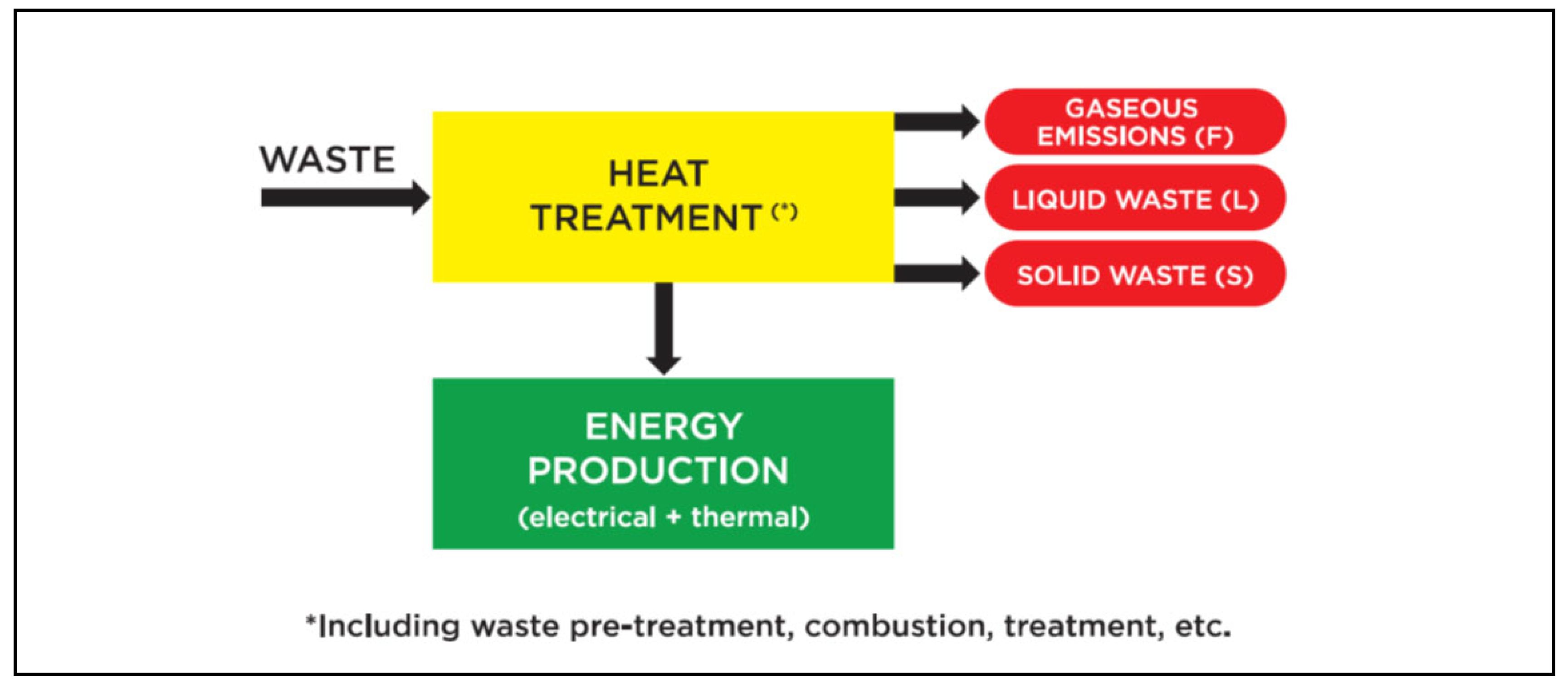
Figure 3. Simplified diagram related to heat treatment.
In the waste sector, the following thermal treatments can be applied:
-
Direct combustion in an incineration plant;
-
Gasification;
-
Pyrolysis.
Among these, the first one—incineration—has so far been the one most frequently applied to solid waste; experience with incineration on an industrial scale is now very extensive.
The three primary thermal treatment procedures can be schematically illustrated as shown in Figure 4 if R is defined as the ratio between the actual (stoichiometric) amount of the oxidizing agent (air and/or oxygen employed) and the theoretical amount.
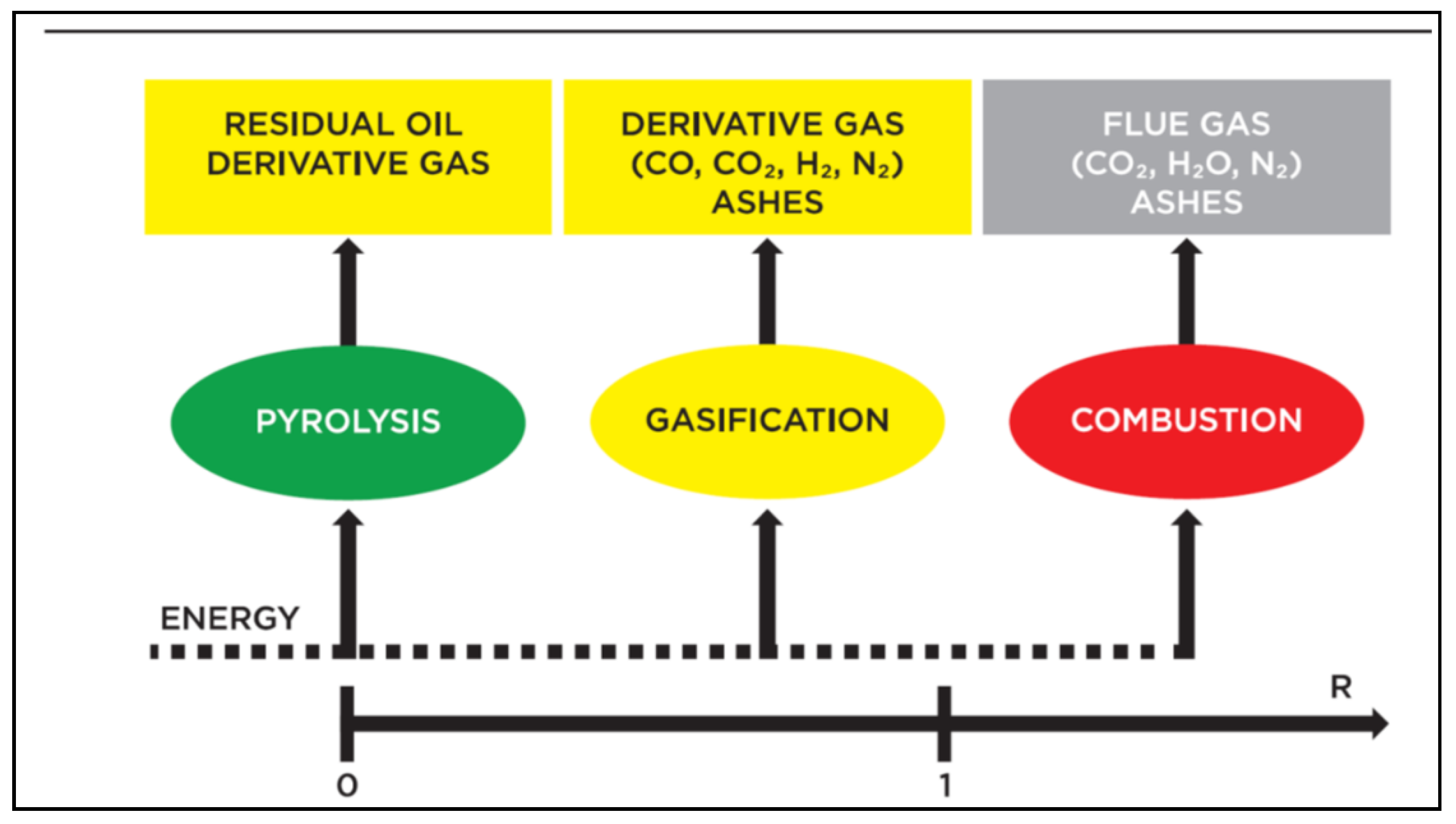
Figure 4. Schematic representation of thermal treatments.
Thus, direct combustion in an incineration plant presents an R higher than 1, so the direct combustion happens with an amount of oxidizing agent higher than the stoichiometric amount; in fact, direct combustion (incineration) is the complete oxidation of the MSW in the input (the main aim of the excess of air is to guarantee the complete oxidation of the organic substance). Gasification presents an R lower than 1, so gasification is a partial combustion of the MSW in the input (the amount of oxidizing agent used during the process is lower than the stoichiometric amount). Finally, pyrolysis presents an R equal to 0, so pyrolysis can be defined as thermal degradation of the MSW in the input (without an oxidizing agent).
The thermal oxidation technique (combustion in particular) used to burn MSW produces simple molecules in a gaseous form by oxidizing the fundamental elements that make up the organic compounds (flue gas). The inorganic portion of the waste is also oxidized and exits the process as a solid residue that can be disposed of or reclaimed. The organic carbon is converted to carbon dioxide (CO2), hydrogen to water (H2O), sulfur to sulphur oxide (SO2), and so on. Since the process is oxidative, oxygen must be present for the reactions to occur. Air is often used, and it is supplied in excess of the stoichiometric amount to facilitate chemical processes, as previously reported [26].
Figure 5 shows the amount of MSW incinerated in European countries in the year 2016 (the data came from [27]).
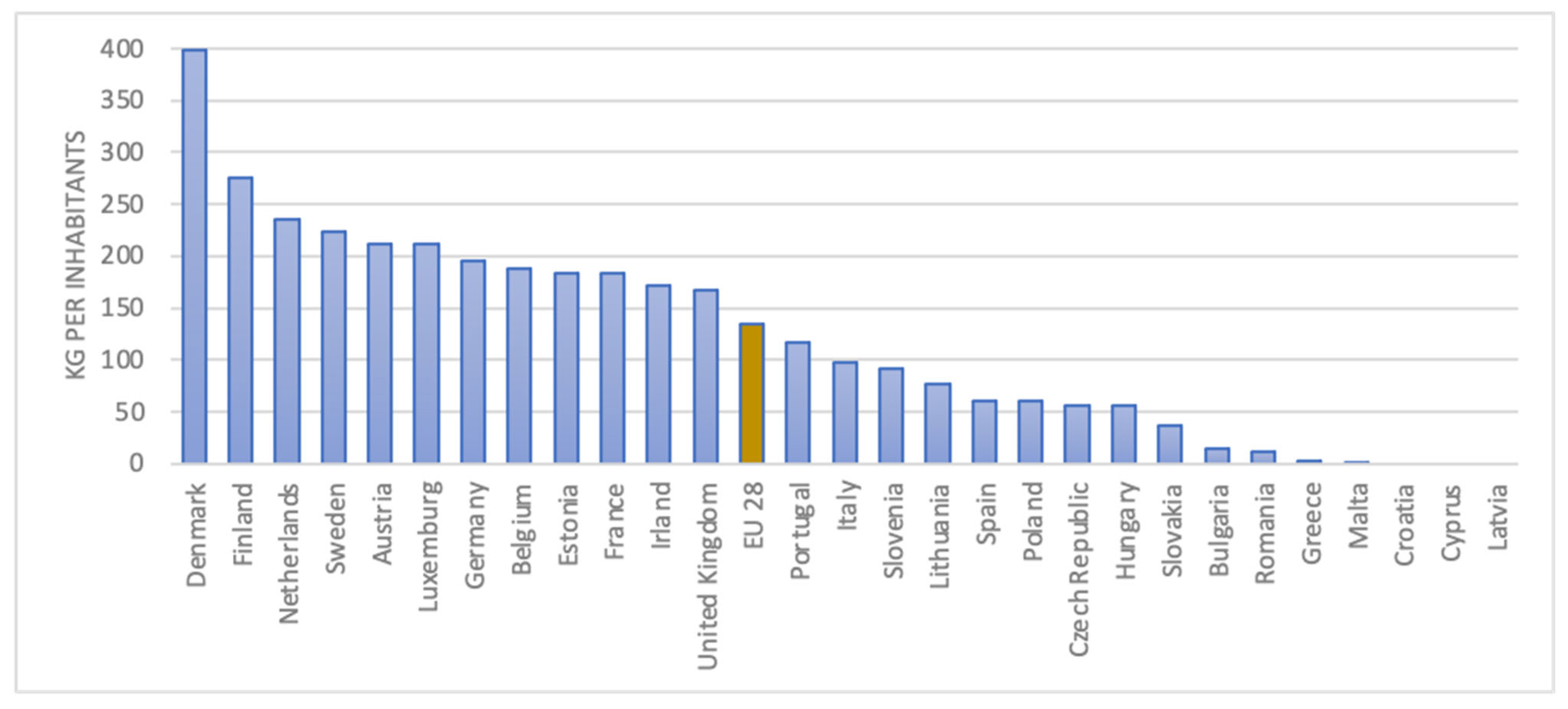
Figure 5. Per-capita incinerated MSW in Europe in 2016.
The main types of thermal treatment (incineration, gasification, or pyrolysis) plants are [26]:
- -
-
Combustion chamber. The most common combustion technologies for MSW treatment are the moving grate system and the fluidized bed system. The first one (moving grate system) is the most widely used technology on account of its flexibility of operation and reliability resulting from extensive application. The technology consists of a grid, inclined to a horizontal line, which is covered with a waste bed that is several dozen centimeters thick. The grid is made up of a number of “fire bar” components that are arranged to allow the combustion air to pass through and be distributed across the entire waste bed. Both directly inside the combustion chamber and underneath the grid, the combustion air is injected. The residence time of the waste in the combustion chamber (and thus on the grid) is generally between 30 and 60 min (in order to allow for the complete oxidation of the organic substances). With the proper systems, the remaining bottom ash produced by the operation is released from the grid’s final section (water bath accumulation tanks). In accordance with an adequate oxygen content (6–8%) and turbulence, temperatures in the range of 950–1000 °C are thought to be sufficient to ensure the complete oxidation of the organic components.
The fluid-bed furnace consists of a combustion chamber with a specified amount of inert material (the “bed”) stored inside. The “bed” of the fluid-bed furnace is often made out of sand that is suspended in an upward air current (which also acts as a comburent). Consistent and full combustion is made possible by the movement of the grid bed, which also contributes to significant temperature uniformity and mixing. The equipment is designed for the burning of relatively homogeneous and tiny chemicals or particles and was initially used in the petrochemical industry (such as, for example, wastewater sludge). Therefore, MSW must go through at least one shredding process to reduce the size of its particles.
At the end of the thermal treatment process, two different types of solid residue are generated:
- ○
-
Bottom ash, generally equal to 20% of the waste input to the plant. This type of residue is generally sent to recovery;
- ○
-
Fly ash, generally equal to 4–7% of the waste input to the plant. This type of residue, removed through the flue gas depuration line, is a hazardous waste and is generally sent to a landfill for hazardous waste.
- -
-
Flue gas depuration line. A thermal treatment plant generates three different outputs: gaseous, liquid, and solid emissions. Before being released into the atmosphere from the chimney, the flue gas must be treated in order to reduce the concentrations of the pollutants generated during the process. The flue gas treatment section is extremely articulated and complex as a result of the increasingly strict regulatory limits placed upon it and of actual technological progress, which in recent years has resulted in the development of sophisticated systems capable of producing emissions much lower than the maximum permitted by legislation.
- ○
-
The pollutants present in the flue gas can be grouped into two different types:
- ○
-
Macro-pollutants: substances present in the flue gas in concentrations in the order of mg/Nm3, such as PM (particulate matter), sulphur oxides (generally SO2), nitrogen oxide (NOx), carbon monoxide (CO), and halogen acids (generally HCl and HF);
- ○
-
Micro-pollutants: substances present in the flue gas in much lower concentrations (in comparison with the concentrations of macro-pollutants), which include both inorganic species, such as heavy metals (Cd, Cr, Hg, Pb, Ni, and so on) and organic species, such as PCDD, PCDF, and PAHs.
With regard to the reduction of these pollutants (both macro- and micro-), according to current legislation it is necessary to use the best available techniques (BATs) defined and reported in the official document of the IPPC Bureau for incineration plants [27].
- -
-
Energy recovery section. Energy recovery from incineration is commonly achieved by capturing the steam emitted when the flue gases are cooled—a process required for their subsequent treatment.
Energy recovery from gasification and pyrolysis, by contrast, is generally obtained from the steam emitted from the combustion of the syngas generated during these processes. There are two possible configurations of such a plant: an electricity-only configuration (i.e., the production of only electrical energy) or a cogenerative configuration (the production of both electrical and thermal energy). Generally, in the electricity-only configuration, the gross yield is about 30%, while in the cogenerative configuration the gross yield (from electricity and thermal revenue) is about 70%.
3. Environmental Aspects
Flue gas is the output from the thermal treatment chimney, and in particular the residual pollutant concentrations contained represent one of the main negative environmental impacts.
In order to ensure that the residual pollutant concentration in the flue gas output from the chimney is lower than the maximum value allowed by the national regulations, it is necessary, as previously indicated, to use the best available techniques (BATs) included in the BAT conclusion document, “Commission Implementing Decision (EU) 2019/2010 of 12 November 2019 establishing the best available techniques (BAT) conclusions, under Directive 2010/75/EU of the European Parliament and of the Council, for waste incineration” [28].
Figure 6 provides an overview of the performances anticipated from the existing treatment systems introduced by the most recent iteration of the BAT conclusion document. The emission limits found in the European rules for the industry are also provided for comparison. With reassuring margins of compliance for some of the contaminants of greatest concern—”first and foremost” dioxins and hazardous metals—the current plant framework demonstrates a situation that is completely compatible with the mandated limits. Remember that all of this is happening in the face of regulations that are now among the strictest in comparison to all other emissive sectors, including stationary combustion and industrial operations.
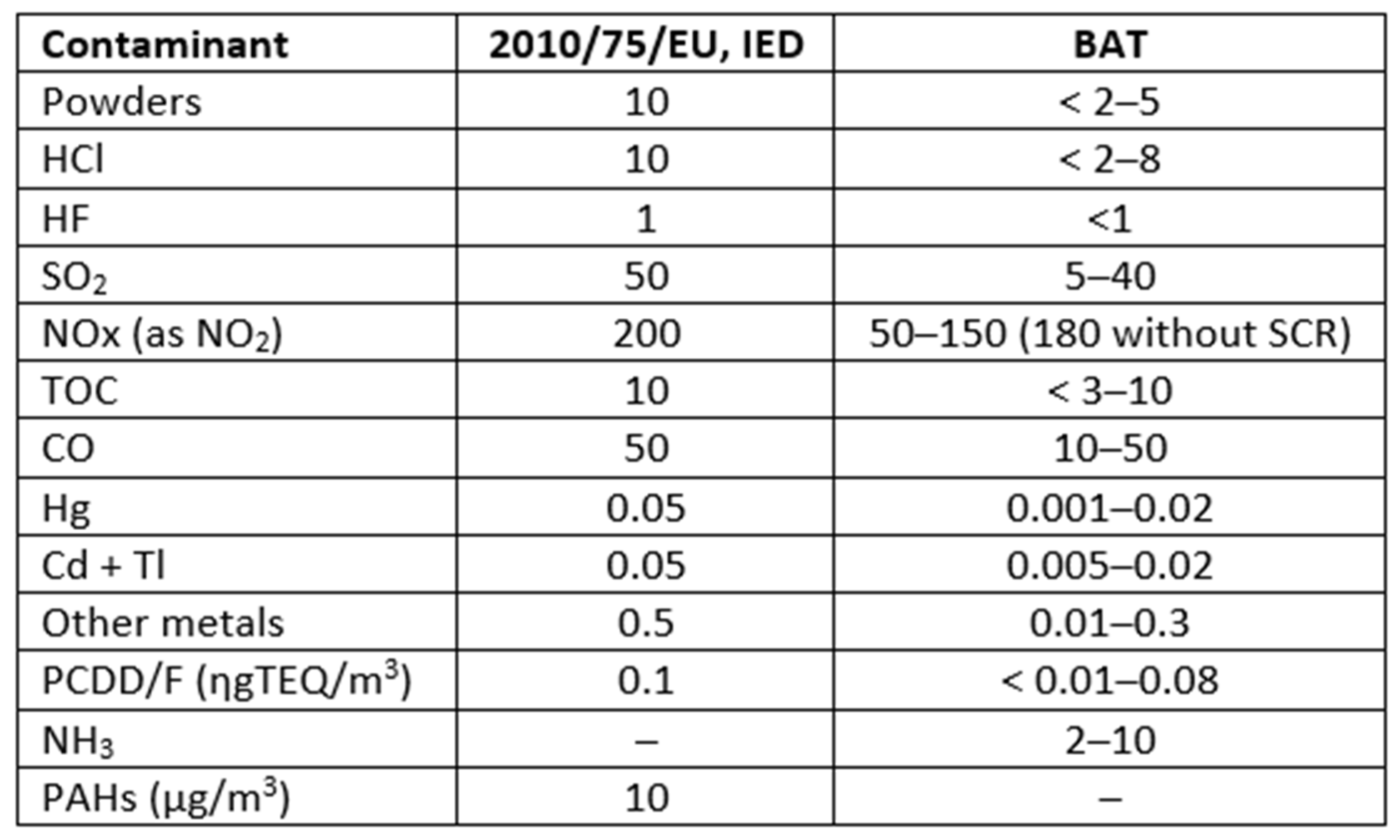
Figure 6. Industrial Emissions Directive’s 2010/75/EU emission ceilings and the emission ranges associated with BAT.
An overview of the most recent measurements for some of the most prominent plants operating in Italy is provided in Figure 7, which supports the comparison of the Italian and European environments. The annual values received through periodic monitoring or continuously recorded by systems and sent to the controlling authorities are displayed in terms of annual values.
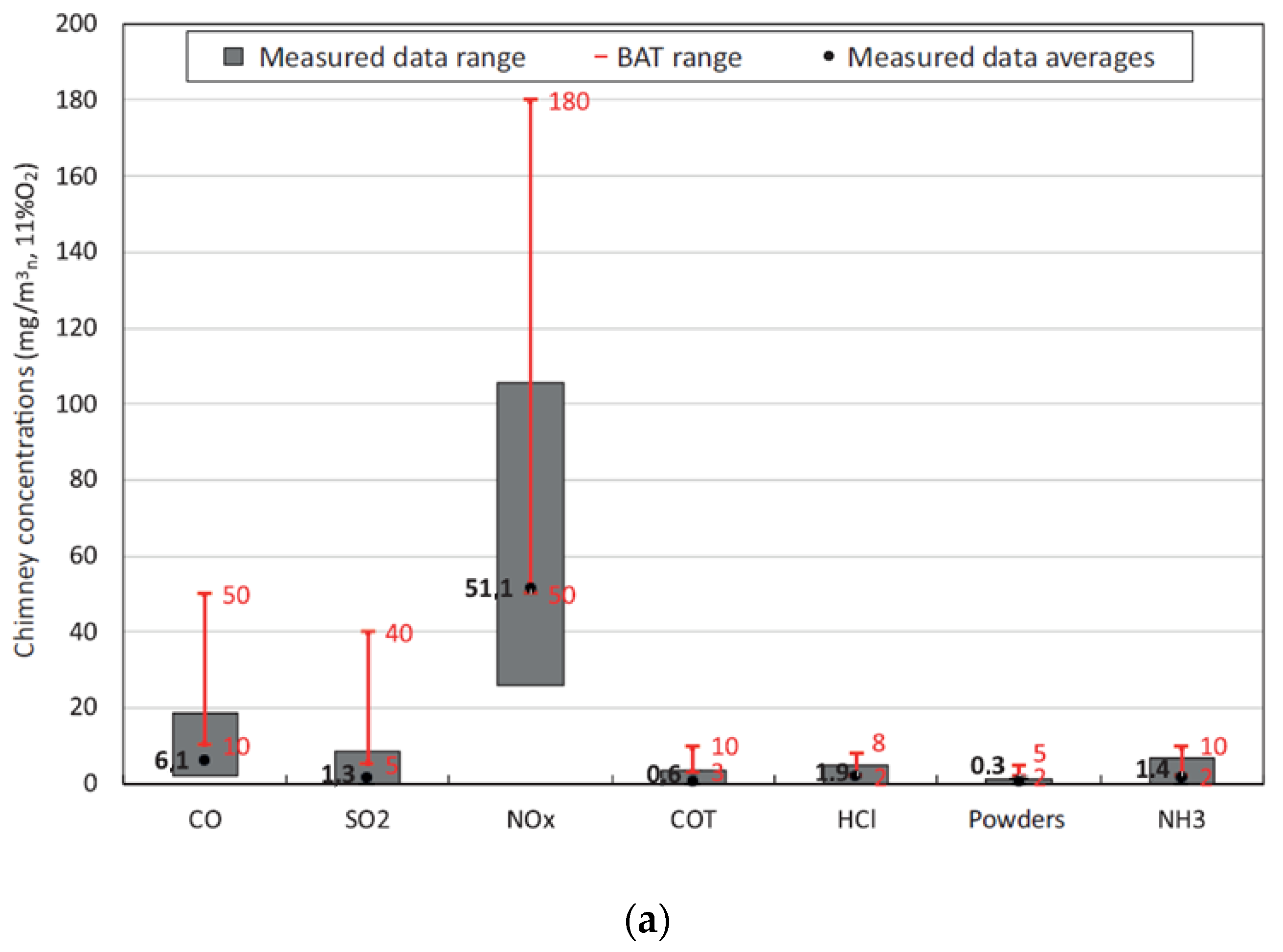
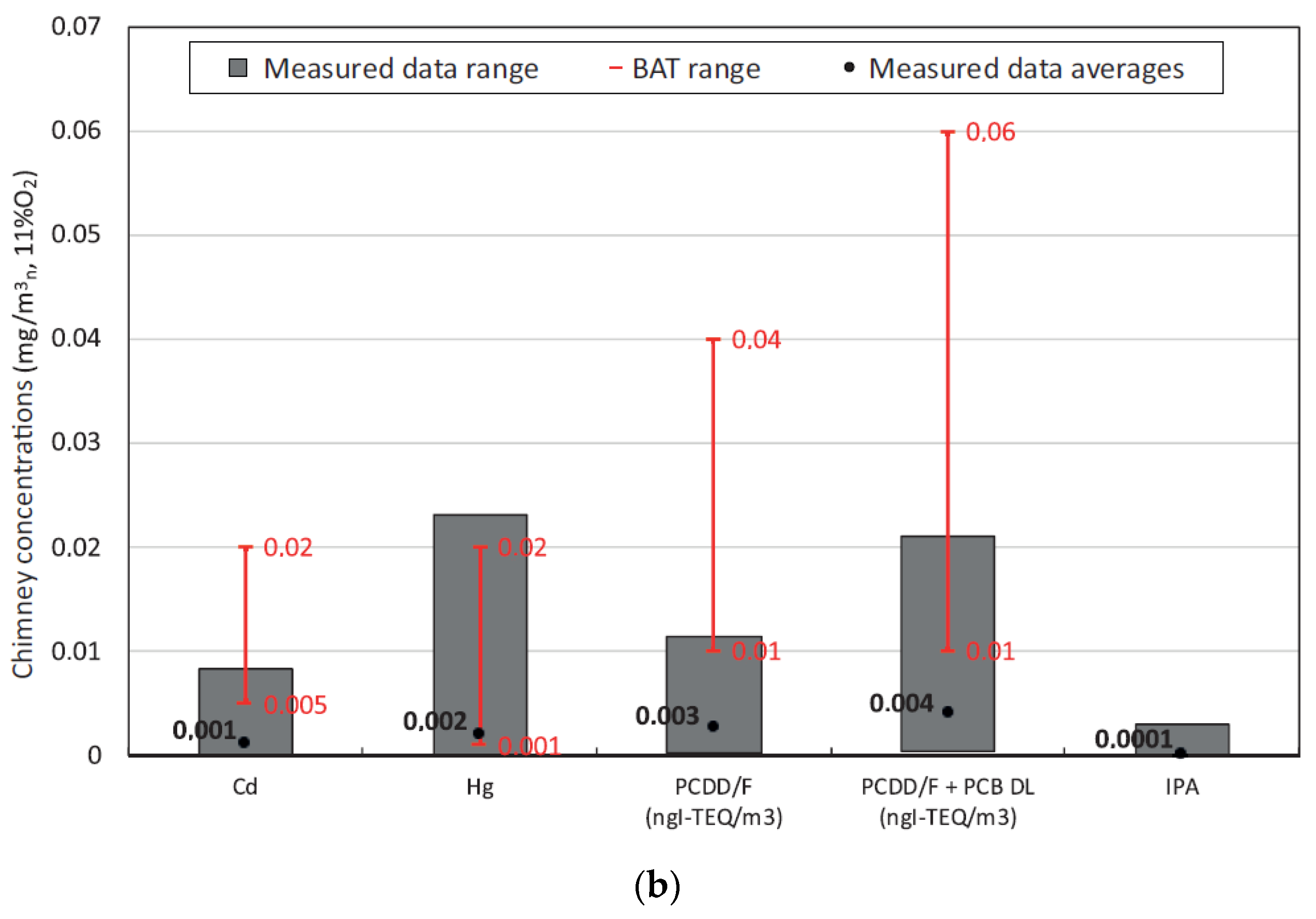
Figure 7. Emission measurements from Italian facilities for the three years between 2016 and 2018 are compared to the industrial BAT values for conventional (a) and trace hazardous (b) pollutants.
Another element of significance to the inventory data is the comparison with emissions from other activities, which are frequently significant contributors to air quality.
The estimations confirm a very small, if not nearly negligible, contribution of incineration emissions compared to those from all other sources, without any pretense of generalizing the national structure to territorial and productive contexts localized in constrained areas. The archive reveals a significant prevalence of residential and commercial combustion for conventional contaminants, particularly for dust (nearly 60%) and CO (approximately 64%), which also affect several trace species, particularly PAHs, though with less reliable estimation. As in the past, it was verified that road transportation, primarily from diesel engines, is the main source of NOx [26].
Dioxins in particular, whose main origins might be associated with the industrial sector (combustion and production processes), as well as civil stationary combustion, present a similar situation when it comes to incineration for both trace metals and organic micro-contaminants.
In order to better understand the role of thermal treatment plants on air quality, the example of the Turin (TRM, Gerbido, Turin, Italy) incineration plant is presented. The facility, which commenced operations in 2014, has been given permission to handle the municipal solid waste (MSW) portion that is left over after separate collection [28][29]. The lower heating value (LHV) of this residual fraction is in the range of 11 MJ/kg.
The plant contains three equal lines, each of which has a combustion zone, an energy recovery section, and lastly a section for flue gas treatment. The plant runs for 7800 h each year. A boiler and a steam turbine are included in the energy recovery portion, while the combustion zone uses a moving grate mechanism. The generation plant runs in a cogenerative mode at the moment. A dry scrubber (with the addition of sodium bicarbonate and activated carbon) for the removal of acid gases as well as organic and inorganic micro pollutants, a bag filter for the removal of residual and generated dust, and a final selective catalytic system for the reduction of NOx make up the section for the treatment of the final flue gas [29]. By combining the aforementioned treatments, it is possible to ensure that the concentration of pollutants in the output flue gas meets the threshold values established by the national law for the release of gaseous effluents into the atmosphere (D. Lgs. 152/2006, BATC 2019) (Figure 8).
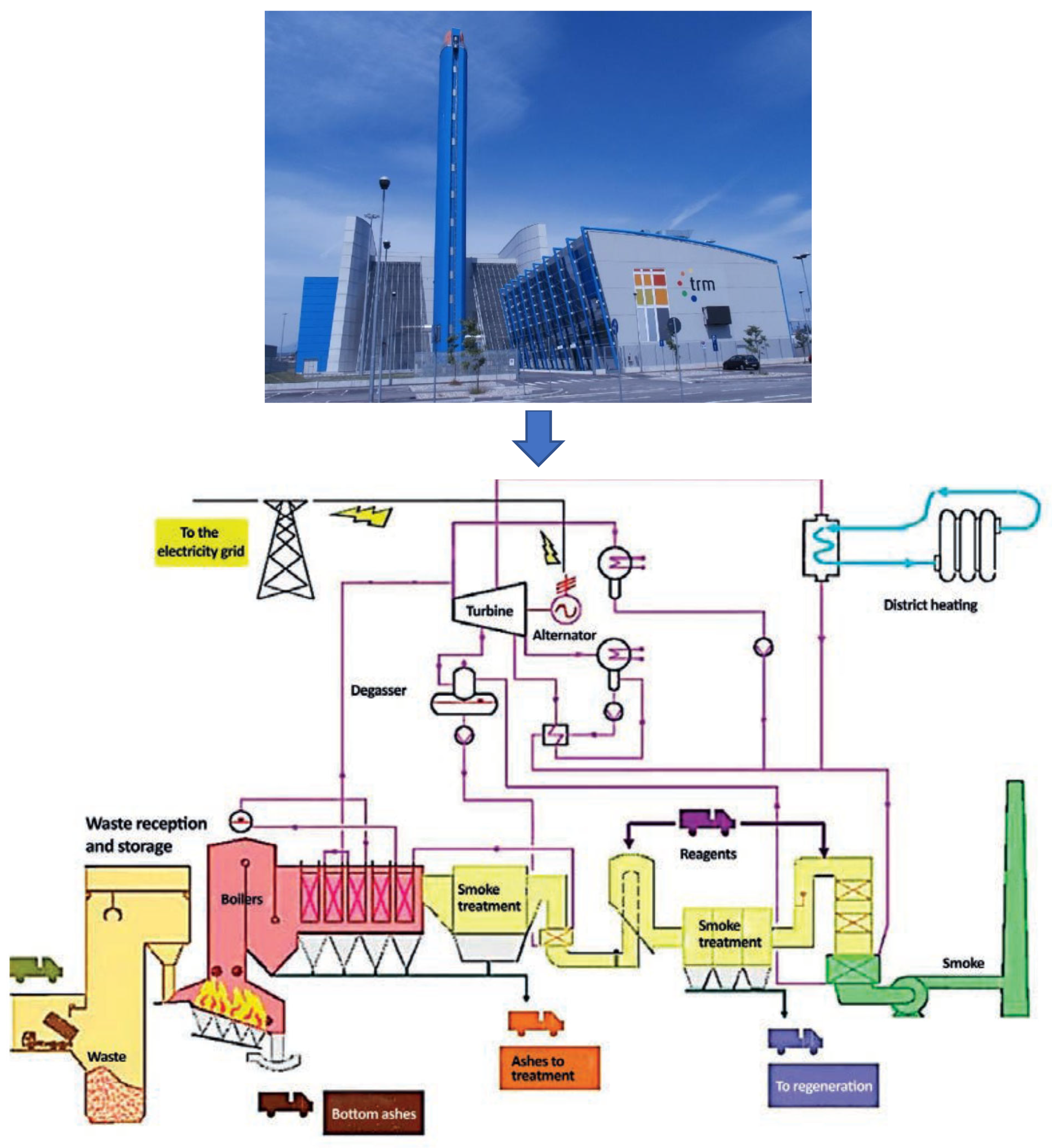
Figure 8. Turin incineration plant scheme.
Figure 9 and Figure 10 report the real-time measures (for certain days in May and June 2022) for the two pollutant parameters, NOx and dust, emitted from the chimney of the Turin incineration plant. As can be seen, the concentrations of these two parameters were always lower than the authorized limit.
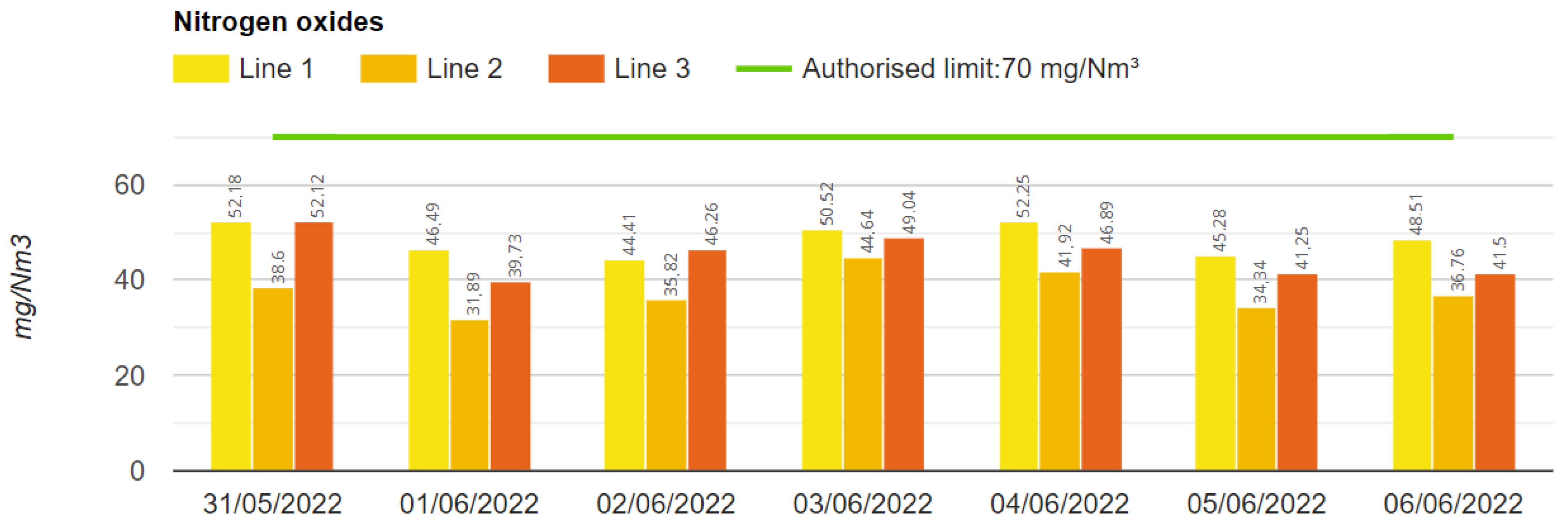
Figure 9. Turin incineration plant real-time emissions: NOx parameter.
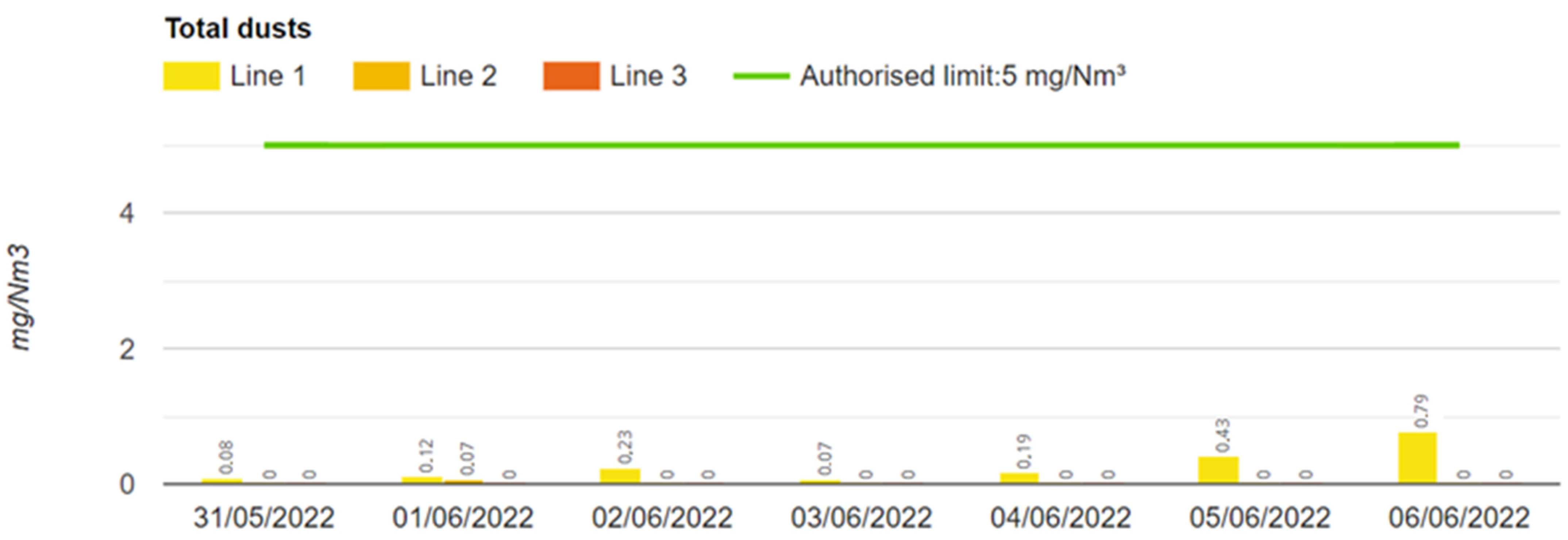
Figure 10. Turin incineration plant real-time emissions: Total dust parameter.
References
- Waste Framework Directive (WFD-Directive 2008/98/EC). Available online: https://eur-lex.europa.eu/legal-content/EN/TXT/?uri=celex%3A32008L0098 (accessed on 13 January 2022).
- TUA, Italian Legislative Decree 152/2006. Available online: https://www.parlamento.it/parlam/leggi/deleghe/06152dl.htm (accessed on 13 January 2022).
- Eurostat Statistics Explained. Available online: https://ec.europa.eu/eurostat/statistics-explained/index.php?title=Municipal_waste_statistics (accessed on 17 January 2022).
- CEWEP (Confederation of European Waste-to-Energy Plants). Available online: https://www.cewep.eu/ (accessed on 13 January 2022).
- Arena, U. Process and technological aspects of municipal solid waste gasification. A review. Waste Manag. 2012, 32, 625–639.
- Kaza, S.; Yao, L.; Bhada-Tata, P.; Van Woerden, F. What a Waste 2.0: A Global Snapshot of Solid Waste Management to 2050; World Bank Publications: Washington, DC, USA, 2018; ISBN 1464813477.
- European Commission. Communication from the Commission to the European parliament, the council, the European economic and social committee and the committee of the regions. The role of waste-to-energy in the circular economy; European Commission: Brussels, Belgium; Luxembourg, 2017.
- Shareefdeen, Z.; Mishu, A.A. Air emissions in waste to energy (W2E) plants. Clean Technol. Environ. Policy 2021, 1–10.
- Panepinto, D.; Zanetti, M. Technical and Environmental Comparison among Different Municipal Solid Waste Management Scenarios. Sustainability 2021, 13, 3167.
- Sabbas, T.; Polettini, A.; Pomi, R.; Astrup, T.; Hjelmar, O.; Mostbauer, P.; Cappai, G.; Magel, G.; Salhofer, S.; Speiser, C. Management of municipal solid waste incineration residues. Waste Manag. 2003, 23, 61–88.
- Alamu, S.O.; Wemida, A.; Tsegaye, T.; Oguntimein, G. Sustainability Assessment of Municipal Solid Waste in Baltimore USA. Sustainability 2021, 13, 1915.
- Bianco, I.; Panepinto, D.; Zanetti, M. End-of-Life Tyres: Comparative Life Cycle Assessment of Treatment Scenarios. Appl. Sci. 2021, 11, 3599.
- Lee, Y.-J.; Go, Y.-J.; Yoo, H.-N.; Choi, G.-G.; Park, H.-Y.; Kang, J.-G.; Lee, W.-S.; Shin, S.-K. Measurement and analysis of biomass content using gas emissions from solid refuse fuel incineration. Waste Manag. 2021, 120, 392–399.
- Sarc, R.; Lorber, K.E. Production, quality and quality assurance of Refuse Derived Fuels (RDFs). Waste Manag. 2013, 33, 1825–1834.
- Yoneda, K.; Ikeguchi, T.; Yagi, Y.; Tamade, Y.; Omori, K. A research on dioxin generation from the industrial waste incineration. Chemosphere 2002, 46, 1309–1319.
- Abaecherli, M.L.; Capón-García, E.; Szijjarto, A.; Hungerbühler, K. Optimized energy use through systematic short-term management of industrial waste incineration. Comput. Chem. Eng. 2017, 104, 241–258.
- Oliveira, M.C.; Magrini, A. Life Cycle Assessment of Lubricant Oil Plastic Containers in Brazil. Sustainability 2017, 9, 576.
- Istrate, I.-R.; García-Gusano, D.; Iribarren, D.; Dufour, J. Long-term opportunities for electricity production through municipal solid waste incineration when internalising external costs. J. Clean. Prod. 2019, 215, 870–877.
- Dong, J.; Tang, Y.; Nzihou, A.; Chi, Y.; Weiss-Hortala, E.; Ni, M.; Zhou, Z. Comparison of waste-to-energy technologies of gasification and incineration using life cycle assessment: Case studies in Finland, France and China. J. Clean. Prod. 2018, 203, 287–300.
- Jegoux, M.; Modrego, J.; Cren, J.; Diethelm, S. Deliverable Report of the Horizon 2020 Project “Efficient Co-Electrolyser for Efficient Renewable Energy Storage”; European Commission: Lyngby, Denmark, 2019.
- Ahmad, A.A.; Zawawi, N.A.; Kasim, F.H.; Inayat, A.; Khasri, A. Assessing the gasification performance of biomass: A review on biomass gasification process conditions, optimization and economic evaluation. Renew. Sustain. Energy Rev. 2016, 53, 1333–1347.
- Ansari, S.H.; Ahmed, A.; Razzaq, A.; Hildebrandt, D.; Liu, X.; Park, Y.-K. Incorporation of solar-thermal energy into a gasification process to co-produce bio-fertilizer and power. Environ. Pollut. 2020, 266, 115103.
- Amaya-Santos, G.; Chari, S.; Sebastiani, A.; Grimaldi, F.; Lettieri, P.; Materazzi, M. Biohydrogen: A life cycle assessment and comparison with alternative low-carbon production routes in UK. J. Clean. Prod. 2021, 319, 128886.
- Lindberg, D.; Molin, C.; Hupa, M. Thermal treatment of solid residues from WtE units: A review. Waste Manag. 2015, 37, 88–94.
- Lombardi, L.; Carnevale, E.; Corti, A. A review of technologies and performances of thermal treatment systems for energy recovery from waste. Waste Manag. 2021, 37, 26–44.
- Utilitalia. White Paper on Municipal Waste Incineration; Utilitalia: Rome, Italy, 2020; p. 96.
- ENI Scuola Energia e Ambiente. Available online: https://www.eniscuola.net/wp-content/uploads/2013/02/pdf_rifiuti-1.pdf (accessed on 13 January 2022).
- European Commission. Best Available Techniques (BAT) Reference Document for Waste Incineration. 2019. Available online: https://op.europa.eu/en/publication-detail/-/publication/075477b7-329a-11ea-ba6e-01aa75ed71a1/language-en (accessed on 13 January 2022).
- Panepinto, D.; Zanetti, M.C. Municipal solid waste incineration plant: A multi-step approach to the evaluation of an energy-recovery configuration. Waste Manage. 2018, 73, 332–341.
More
Information
Subjects:
Environmental Sciences
Contributors
MDPI registered users' name will be linked to their SciProfiles pages. To register with us, please refer to https://encyclopedia.pub/register
:
View Times:
706
Revision:
1 time
(View History)
Update Date:
08 Dec 2022
Notice
You are not a member of the advisory board for this topic. If you want to update advisory board member profile, please contact office@encyclopedia.pub.
OK
Confirm
Only members of the Encyclopedia advisory board for this topic are allowed to note entries. Would you like to become an advisory board member of the Encyclopedia?
Yes
No
${ textCharacter }/${ maxCharacter }
Submit
Cancel
Back
Comments
${ item }
|
More
No more~
There is no comment~
${ textCharacter }/${ maxCharacter }
Submit
Cancel
${ selectedItem.replyTextCharacter }/${ selectedItem.replyMaxCharacter }
Submit
Cancel
Confirm
Are you sure to Delete?
Yes
No




